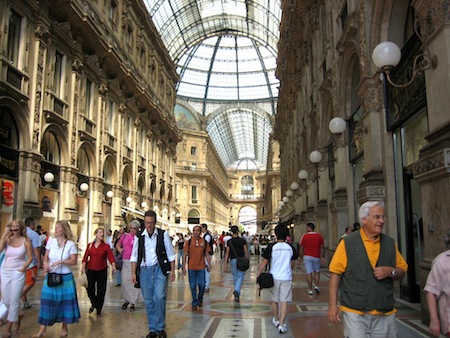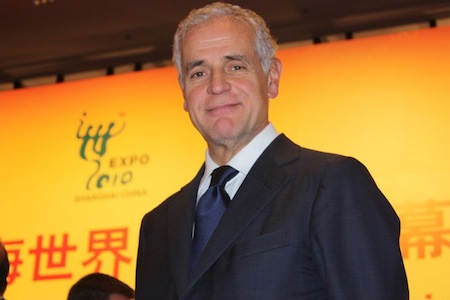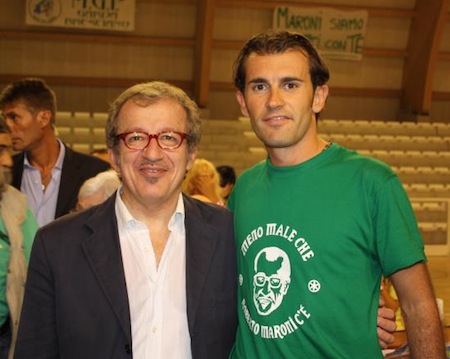Although Italy will hold national elections on February 24 and 25, three regions will hold elections as well — Lombardy, Lazio and Molise.
![]()
![]()
None of those will be more important than those in Lombardy (or Lombardia in Italian), the most populous region of Italy and, as home to Milan, Italy’s financial and fashion capital, also its wealthiest region.
Since the fall of the so-called ‘first republic’ with the implosion of Italy’s Christian Democratic party in the early 1990s, the centrodestra (the center-right) has dominated regional politics in Lombardy and, since 1995, Roberto Formigoni has served as Lombardy’s regional president, consistently winning outsized victories against the centrosinistra (the center-left) in 2000, 2005 and most recently, 2010.
Formigoni (pictured below), however, is not running for reelection — he announced the resignation of the regional legislature in October 2012 after his colleague, Domenico Zambetti, was arrested for purchasing votes from the ‘Ndrangheta — the local organized crime operation of Calabria — during the 2010 elections.
As such, ending corruption in the region’s government has taken center-stage in one of Europe’s wealthiest regions.
Realistically, that means that the centrosinistra has its first real shot at winning regional power in Lombardy, though the centrodestra‘s strength is such that, despite its scandal-plagued woes, it remains very much capable of winning yet another term in power.
It would be nearly the equivalent of the Democrats in the United States taking control of the government of the state of Texas — a political earthquake, even more of a surprise for the left than in the regional elections in Sicily in October 2012, when Rosario Crocetta became not only the island region’s first leftist president, but also its first openly gay president.
Voters will choose the regional president in a direct vote — the winner and the runner-up, as leader of the opposition, are guaranteed a seat in the 80-member Consiglio Regionale della Lombardia (Regional Council of Lombardy). The remaining 78 members of the Regional Council are selected pursuant to a proportional representation system, tied both to the presidential vote and to a separate party-list vote.
Polls show both the direct presidential vote and the vote for the Regional Council are incredibly tight.
Roberto Maroni, who became the national leader of the Lega Nord (LN, Northern League) in July 2012 after the resignation of longtime leader Umberto Bossi, is running as the candidate of the centrodestra — the Lega Nord‘s local branch in Lombardy is the Lega Lombardia (LL, Lombardy League), and it has been the longtime ally in Lombardy of the conservative Popolo della Libertà (PdL, People of Freedom) of Silvio Berlusconi.
Maroni (pictured below) has pledged to step down as the leader of the Lega Nord after the regional elections in February, regardless of whether he becomes the next regional president, apparently ending what’s been a long and fairly successful career in national politics. Most recently, in Berlusconi’s previous government from 2006 to 2008, Maroni served as minister of the interior.
A victory for Maroni would not only showcase the strength of the centrodestra‘s hold on Lombardy, but would be a huge boost for the Lega Nord, which has advocated more autonomy for the relatively wealthier northeast and center-north of Italy — and, at times, even its complete secession from Italy.
The candidate of the centrosinistra, Umberto Ambrosoli, is the son of Giorgio Ambrosoli, an attorney murdered in 1979 as a result of his investigation into the irregularities of a the Mafia-connected banker, Michele Sindona.
Polls show each candidate winning between 35% and 40% of the vote, often trading leads.
Two additional candidates each win around 8% to 10% of the vote.
Gabriele Albertini, mayor of Milan from 1997 to 2006, and a member of the PdL, is running as the candidate of a centrist coalition of former Christian Democrats, including the Unione di Centro (UdC, Union of the Centre), on a relatively anti-corruption platform that’s brought him into some conflict with Formigoni.
Silvana Carcano is running as the candidate of the anti-austerity, populist Movimento 5 Stelle (M5S, the Five Star Movement), led nationally by comedian Beppe Grillo.
In particular, Albertini’s candidacy threatens to pull enough votes from Maroni to split the centrodestra, all to the benefit of Ambrosoli and the centrosinistra.
Several other factors, though, should give the centrosinistra tailwinds in advance of the Lombardian elections, including:
- voter fatigue with Formigoni, who defied in 2010 a national law limiting regional presidents to three consecutive terms (arguing that he was elected directly for the first time before the law came into effect), who once arranged to provide a safe seat for Nicole Minetti, a former showgirl and Silvio Berlusconi’s former dental hygienist, and who has been accused of massive waste and corruption in governing Lombardy;
- the strength of the centrosinistra nationally under Pier Luigi Bersani, the national leader of the Partito Democratico (PD, Democratic Party) and frontrunner to become Italy’s next prime minister; and
- momentum from the success of Giuliano Pisapia, who won the Milan mayoral race in 2011 with the backing of the far-left Sinistra Ecologia Libertà (SEL, Left Ecology Freedom).
A recent poll for the parliamentary vote shows that the centrodestra would win around 39.7% (with the PdL taking 17.9% and the Lega Lombardia winning 15.9%), while the centrosinistra would just narrowly edge them out with 39.9% (29.5% for the Democratic Party and 4.9% for SEL). The Albertini-led centrist coalition would win 9.8%, and the Five Star Movement would win 10.1%.
In the previous 2010 election, Formigoni’s centrodestra won 49 seats to just 28 seats for the centrosinistra (with three additional seats for the UdC). Within the centrodestra, however, the PdL won 31.8% of the vote and the Lega Lombardia won 26.2% of the vote, with just 22.9% for the Democratic Party.
Lombardy is home to 10 million Italians, one-sixth of Italy’s population, and its GDP per capita of around $38,000 is nearly double that of the GDP per capita of many of Italy’s southern regions — it’s bordered on its north by the Italian-speaking, southeastern corner of Switzerland and, indeed, the region, with its snow-capped mountains and alpine lakes, shares much more in common with the relatively wealthier Swiss than the poorer Sicilians and Calabrians in Italy’s south.
Lombardy, together with Veneto (and to a lesser degree, Piedmont), is the electoral heartland of the Lega Nord, and Milan, Berlusconi’s home town, is often seen as the electoral heartland of the PdL, so a victory for the centrosinistra here would mark an incredible deterioration for the Berlusconi brand and the reputation of the center-right, generally.
In terms of the national elections, the centrosinistra and centrodestra are also incredibly competitive in Lombardy — a recent Euromedia poll shows Berlusconi’s centrodestra winning 35.4% with Bersani’s centrosinistra winning 35.0%, prime minister Mario Monti’s pro-reform, centrist coalition winning 12% and the Five Star Movement winning 10.5%.
Top photo credit to Kevin Lees — Milan, inside Galleria Vittorio Emanuele II, September 2006.



Grazie per l’informazione
FelIce anNo nUovo 2017
BuOn anno 2017-FelicE aNno NuoVo
fEliCe anNo Nuovo
CaPodaNno 2017